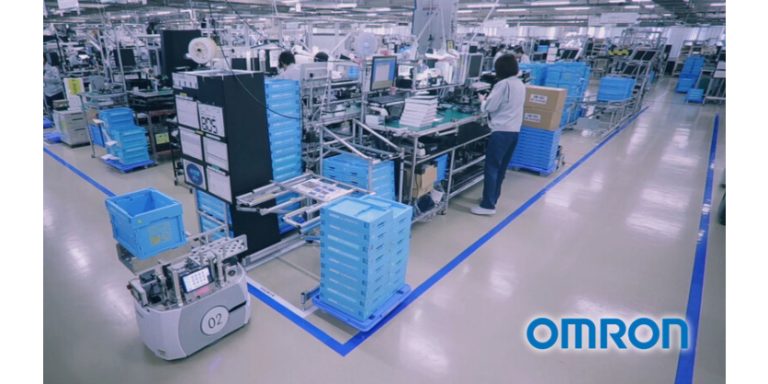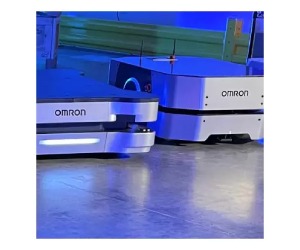California’s Sierra College, Roseville Joint Union High School District to Offer Mechatronics Training at High School Level
July 15, 2025
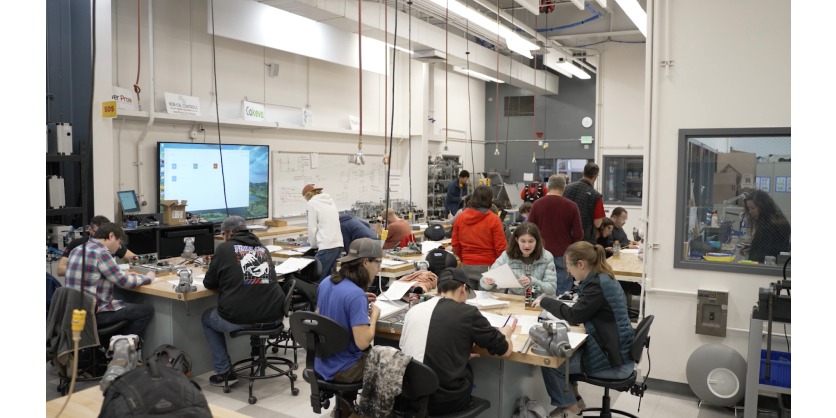
By Krystie Johnston
In the U.S., California is the leading employer for electro-mechanical and mechatronics technicians. Training people to fill these roles domestically is critical for supply chain resilience. For the U.S. to compete globally, and bring manufacturing and innovation back to American soil, they need a skilled workforce that can operate and maintain complex systems. Recently, Sierra College, just outside Sacramento, Calif., and nearby Roseville Joint Union High School District teamed up to create a dual-enrollment partnership to start building that talent pipeline early – during students’ high school years.
The school district has already secured $2.2 million in grants to build two cutting-edge mechatronics labs at its Oakmont and Antelope high schools, and Sierra College is investing additional resources and staffing to ensure that course rigor mirrors its Applied Technology Center. These investments will enable high school students to earn college credits in mechatronics engineering, with the goal of adding more than 150 students to Sacramento State University’s mechanical engineering program within three years.

“This partnership is more than passing along a curriculum – it is a statement that we believe in investing in young people now,” says Roy Ingram, Professor and Department Chair of Mechatronics at Sierra College.
“We are not waiting for young people to graduate and then figure it out. We are giving them access, mentorship, and real-world skills building while they are still in high school. This model, community colleges and K-12 [students] working hand in hand with industry, will create future-ready talent.”
Ingram believes in this initiative because he knows what it can do for students. He was a Computer Integrated Electronics student at Sierra College over 25 years ago (now known as Mechatronics), and it launched his career as an equipment technician in the semiconductor manufacturing industry.
“I worked on advanced automation systems and process tools for over two decades,” he says. “I came back to Sierra College to teach because I believe in the program. And I know what it can do for students. It gave me a career. Now, I get to open those same doors for the next generation.”
This initiative has been driven by many dedicated individuals. Ingram says that Shane Waggoner, the Director of Career and Technical Education at Roseville Joint Union High School District, and Amy Schulz, the Executive Dean of Workforce and Strategic Initiatives at Sierra College, have each been a driving force in making this vision a reality. “Their leadership and deep understanding of what students need to be successful have helped shape every part of this effort,” he says.
Ingram adds that equally important are the faculty hired to teach Mechatronics at both high schools. “These instructors bring a rare combination of teaching skills and real-world experience. They have the breadth of knowledge necessary to lead students through complex lab work, not just lecture about theory. Teaching Mechatronics means guiding students through hands-on builds, troubleshooting live systems, and cultivating the technical confidence employers seek.”
Meeting Workforce Needs
At the state level, California has the most manufacturing jobs, around 1.2 million, according to the U.S. Bureau of Labor Statistics1. The state needs a skilled workforce that can operate and maintain complex systems.

“We knew that we had to expand our capacity to meet the regional workforce needs, and working with the high schools was a logical way to do this,” says Sierra College’s Amy Schulz. “First, we need to make more youth aware of the opportunities in the semiconductor industry. Second, partnering with high schools also builds training lab capacity – both in the physical lab space and geographic diversity,”
Schulz says that the two district schools were ideal choices to implement this initiative because they are both well positioned to host Mechatronics pathways. “They had support from administration at both sites. Oakmont High School had a teacher on staff already, and Antelope High School hired an instructor. Both schools have a higher population of disproportionately impacted student groups, which is a priority for our program expansion.”
It was also important that the Mechatronics labs at both high schools have the same equipment and supplies as the labs at Sierra College to ensure a smooth learning process for students.
Schulz says that the equipment used for training is based on curriculum needs, which in turn is driven by employers who will be tapping new talent as it emerges. For this purpose, the labs at both high schools have been renovated, and the labs at Sierra College are being modernized.
“The Mechatronics labs and classrooms in the Applied Technology Centre will be open in Fall 2026. This $60 million modernization project will bring the 60-plus-year-old buildings to the 21st century,” Schulz says. “The labs have been specifically designed for the needs of the Mechatronics program.” In addition to the instructional programs, there will be an interdisciplinary makerspace for prototyping and student projects.
Honing Real-World Skills
In the new dual-enrollment program, students will learn the broad world of Mechatronics – where mechanical systems meet electronics (think components such as resistors, capacitors, transistors, integrated circuits, etc.), control systems (sensing, data acquisition, programmable logic, feedback loops, etc.), and automation (actuators, motors, pneumatics, hydraulics, etc.), according to Ingram.
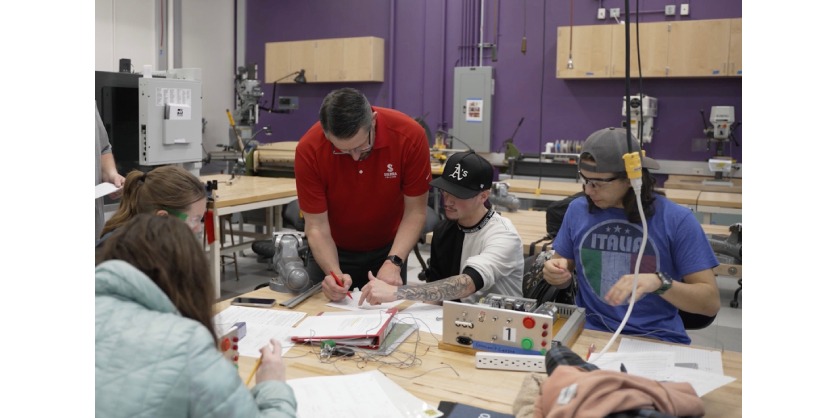
“These are the real-world skills used in industries, from robotics, to renewable energy, public utilities, material handling, and all types of manufacturing,” he says.
Ingram also notes that students will learn with hands-on labs and industry-grade equipment, using real tools – not simulations – and they will build and test systems the same way professional technicians and engineers do. “Instruction will happen right at their high school campuses, where dedicated lab spaces will mirror the college experience. These are college classes, taught with college rigour. But embedded in the high school environment to create a bridge to post-secondary [education] and career pathways.”
Teachers will train this summer to ensure they bring up-to-date curricula and course delivery to students. “As we expand [this] offering at different high schools, we want to make sure instructors are supported in their teaching and have a firm understanding of the program,” Schulz adds, citing this as a reason for creating the Summer Dual Enrollment Institute. It was designed to teach high school teachers how to instruct at the college level and build rapport with their peers.
“[Overall], this is a carefully designed program,” adds Ingram. Students will take Mechatronics classes as part of their regular school day and will walk away with transferable college credit. Participants will complete up to two foundational Mechatronics courses before they graduate from high school – providing a welcome head start for degrees or certifications.
Working with Future Mechatronics Technicians
So, who is this initiative for? What does the ideal student look like? Ingram says there is no strict prerequisite beyond an interest in Science, Math, Engineering, and Technology, often dubbed STEM. “The ideal student is curious. They like solving problems. They enjoy figuring out how things work – whether those are mechanical systems, electronics, or computer-controlled machines… We have designed this to be accessible to students who might not know yet that they are engineers or technicians – but who will thrive once they get the opportunity to explore.”
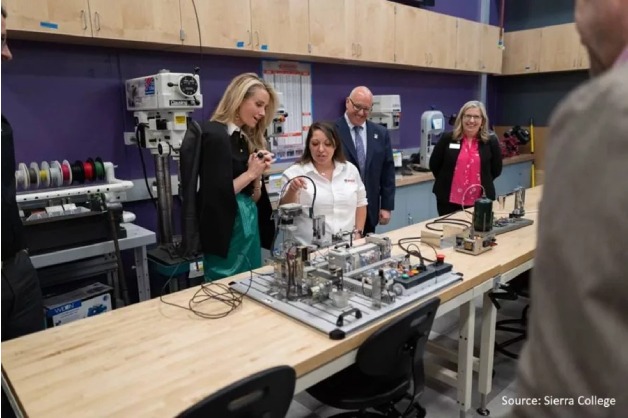
Getting young people inspired by STEM careers early is important to build that pipeline of talent. Employers need them. And rewarding careers are waiting.
“Industry cannot wait until students are 22 years old to start preparing them. The technology is moving fast – automation, robotics, and AI are already reshaping how we live and work,” says Ingram.
The goal, he confirms, is to give students early exposure so they can make informed decisions about their futures. Another goal: diversifying those who enter engineering and technician pathways – to provide opportunities to hands-on learners, builders, and problem-solvers.
The partnership between Sierra College and the Roseville Joint Union High School District is the work of experts and local leaders who are committed to quality, mentorship, and building a foundation for students to succeed. Initiatives like this also help mitigate the supply chain and reshoring challenges seen today nationally and internationally. Training technicians and engineers domestically is critical for supply chain resilience. Programs like this build that pipeline – early – creating local talent for global competitiveness.
Notes:
1. Industry employment by state, May 2025, seasonally adjusted (in thousands). https://www.bls.gov/charts/state-employment-and-unemployment/industry-employment-by-state.htm
More Information
Roseville Joint Union High School District

